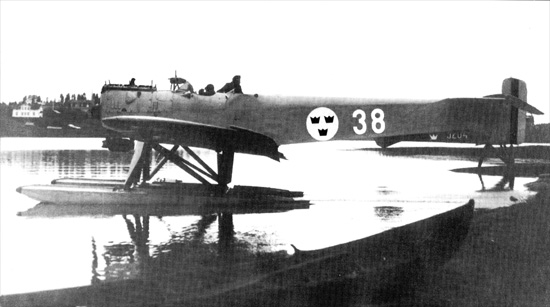|
|
||
|
S
2 - Caspar S.1/Heinkel HE 1 ”Hansa” (1921-1931) |
||
|
|
Page 1 (1) |
|
|
|
||
 |
||
|
An old Swedish proverb says ”a dear child has many names”. This could really be applied to the ”Hansa”, the low-winged float-plane used in Sweden for almost 30 years. The names and designations were many; Caspar S.I, Hansa Brandenburg, Caspar S.II, Heinkel S.1, HE 1, HE 2, HE 4, S 2, S3, S 4, S 5, S 5A etc…Of course the design and performance was improved during the years, but the main outlines were the same, once drawn by the famous German aircraft designer Ernst Heinkel. The first ”Hansa” (”Caspar S.I”) was made by Caspar-Werke in Travemünde. Caspar S I was a development of the Hansa Brandenburg W 29, a successful seaplane for reconnaissance and combat duties during WWI. A contract was drawn up for the delivery of a prototype and for manufacturing in Sweden under license. To avoid problems with the embargo for German military equipment after the Peace of Versailles, the aircraft arrived to Sweden in parts and was finally assembled at Svenska Aero AB in Lidingö in the end of 1921. This first Hansa was given the number 31. Further ten aircraft (numbers 32-41) were ordered in 1922. They were built partially in Germany (Casparwerke) and partially in Sweden (Svenska Aero and Galärvarvet). In 1923 all were delivered. The co-operation between Caspar and Heinkel had come to an end, so the new ”Hansas” were officially designated Heinkel HE 1 (HE = Heinkel Eindecker). The eleven first Hansas were all fitted with a Maybach IVA engine of 260 hp. For the first time in the history of Swedish Navy aviation the aircraft were armed, with one machine-gun
When
the Swedish Air Force was established in 1926, the surviving seven
aircraft were transferred
with the designation S 2. S =
”Spaning” (Reconnaissance). The photo above is copied from the book "Flygvapnet 1926-1996 - Från Dronten till Gripen" with kind permission from the author Anders Annerfalk. The photo is taken in 1926, when this Hansa was used for photo missions during the rectification of the frontiers between Sweden and Finland. Hansa number 38 was delivered in 1923 and was later taken over by the Air Force. |
|
|
|
|
||
|
|
||
|
|
||
|
|
Updated 2009-05-13 |
|